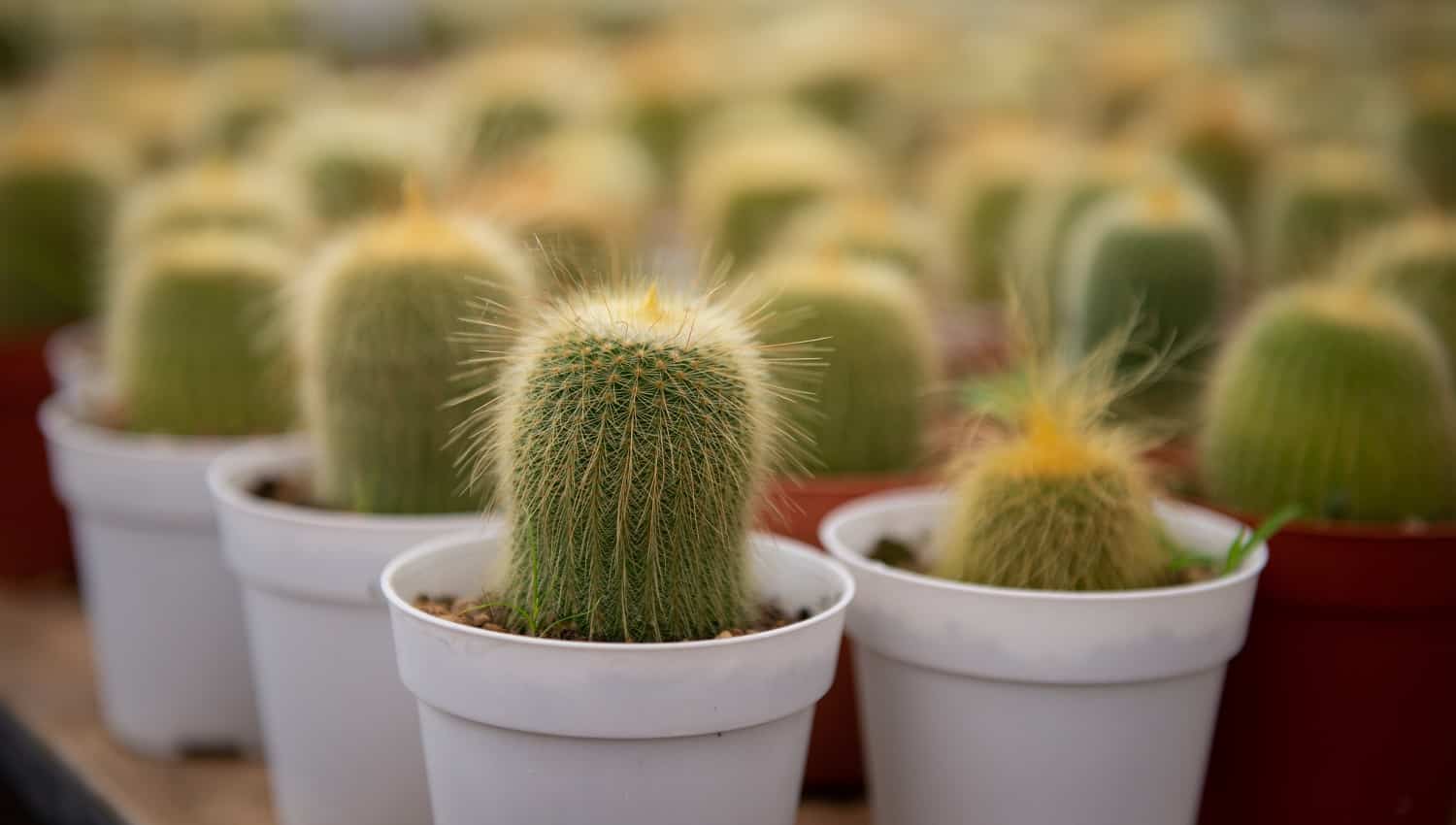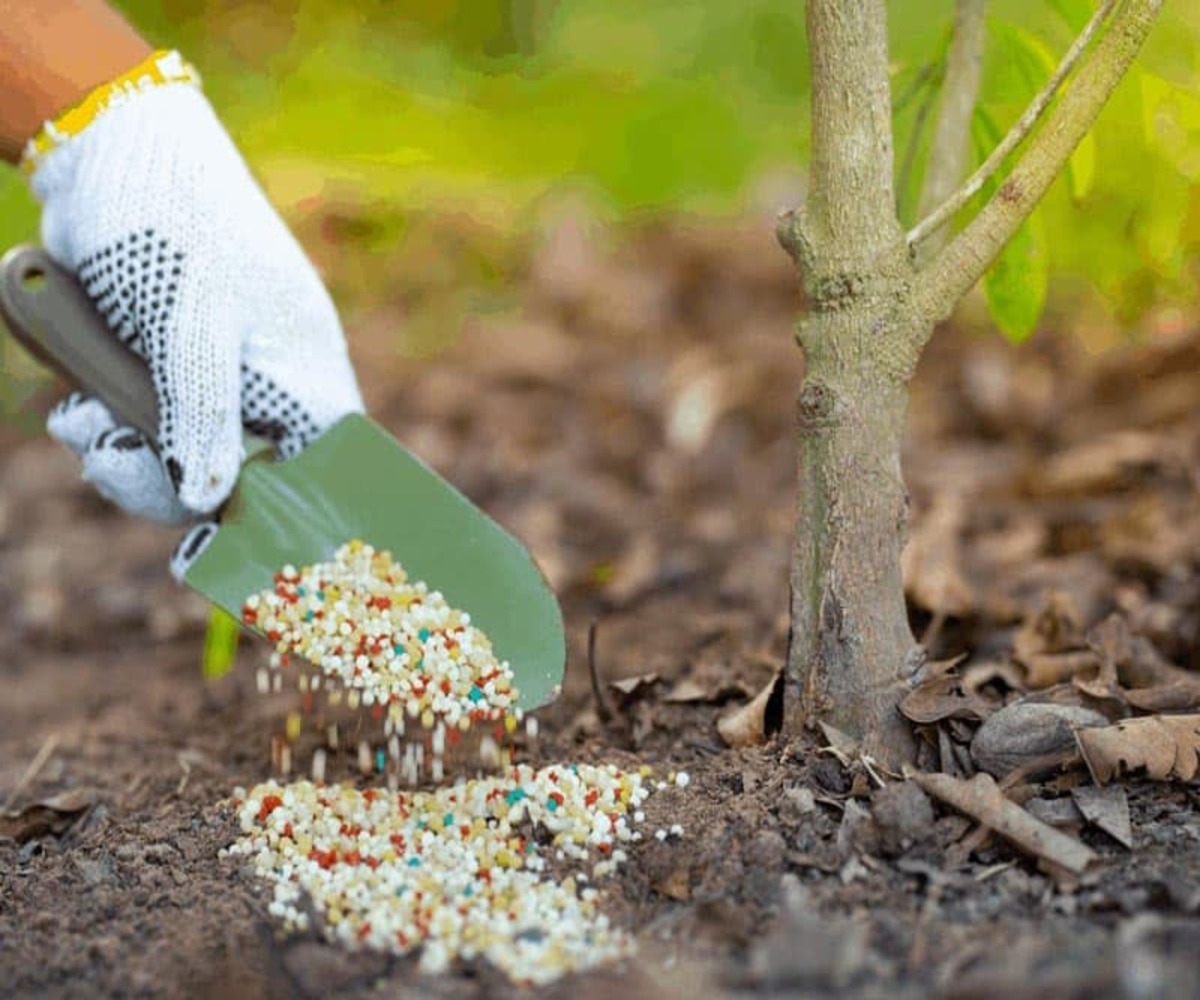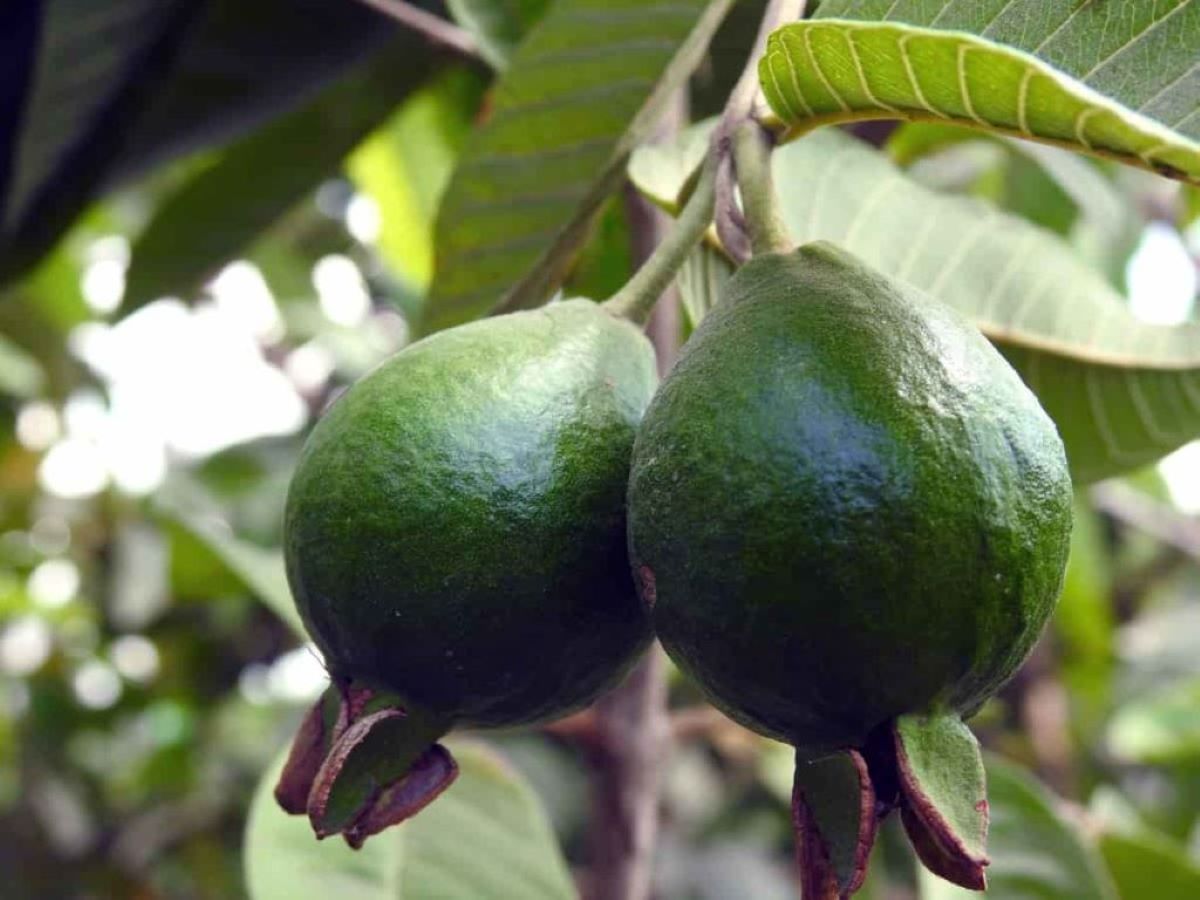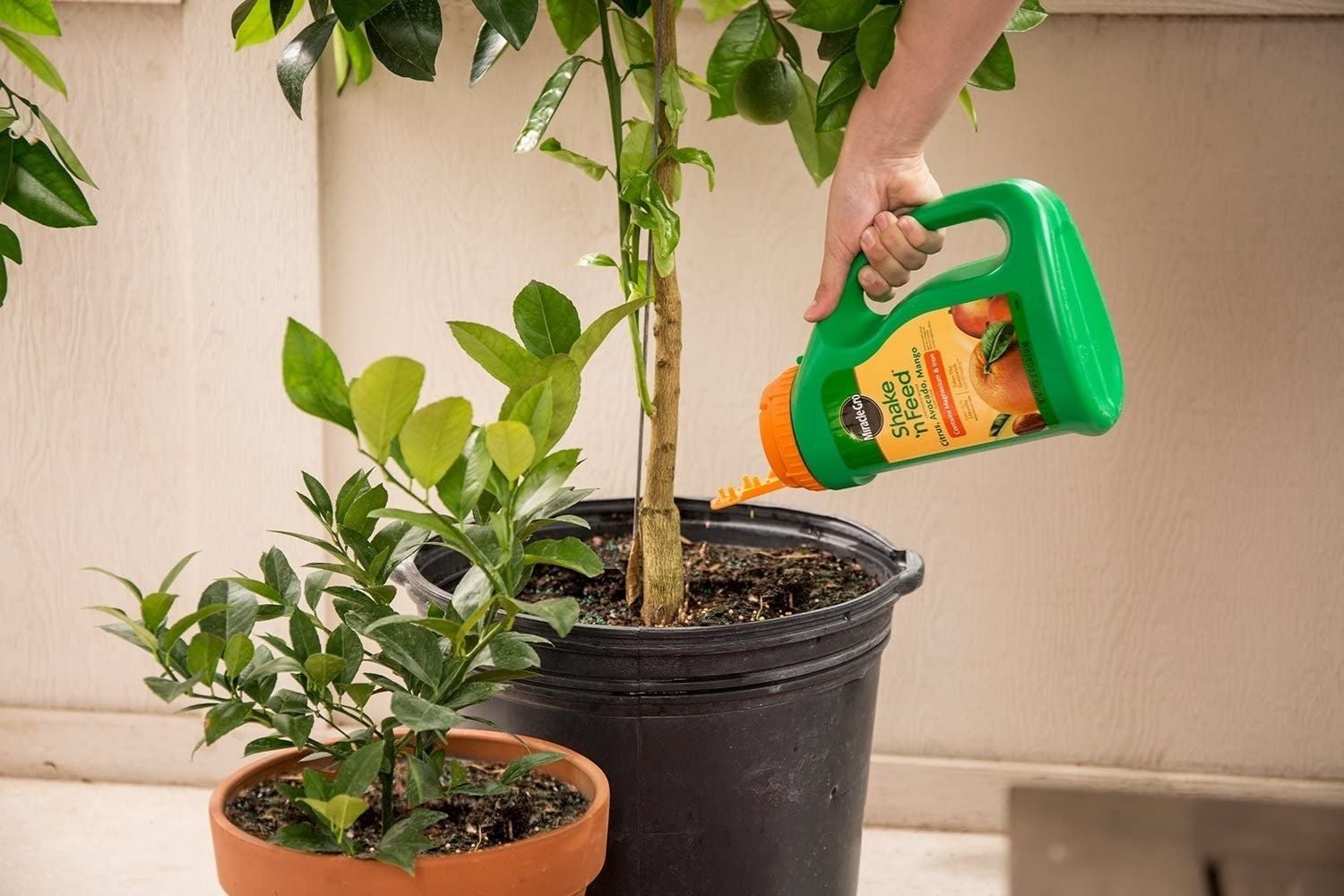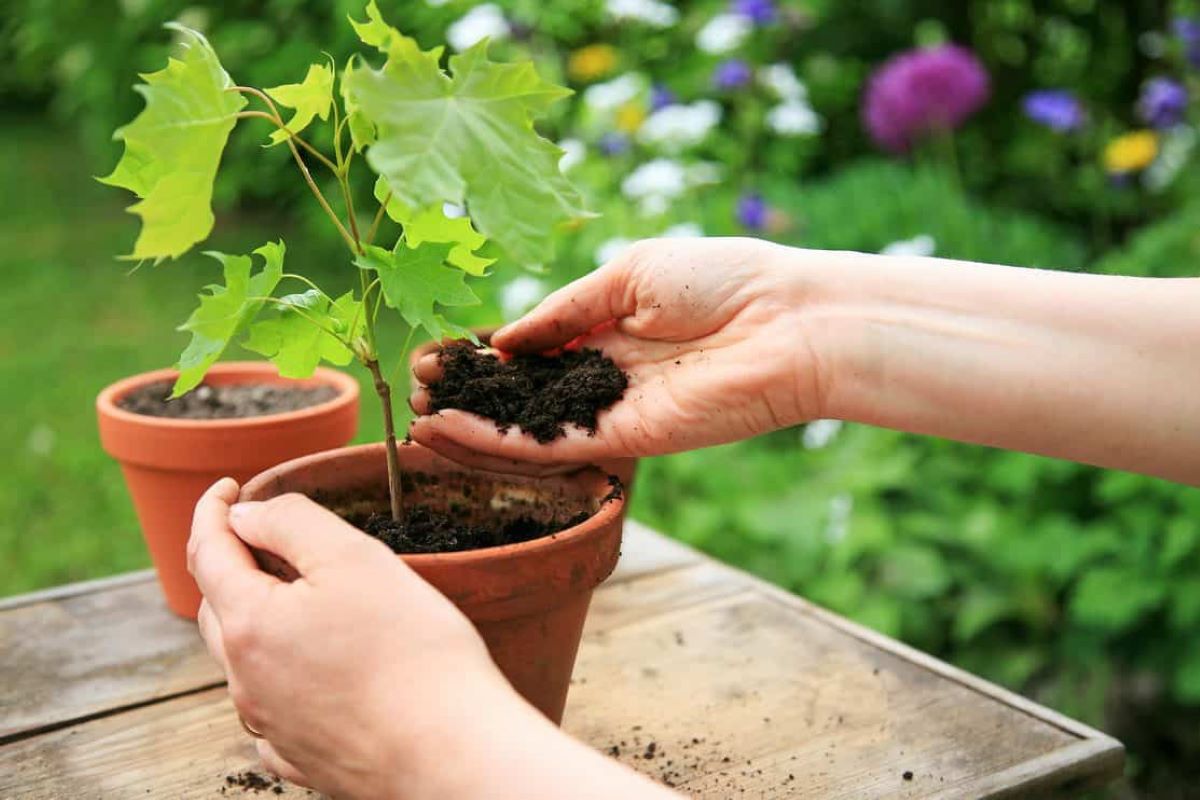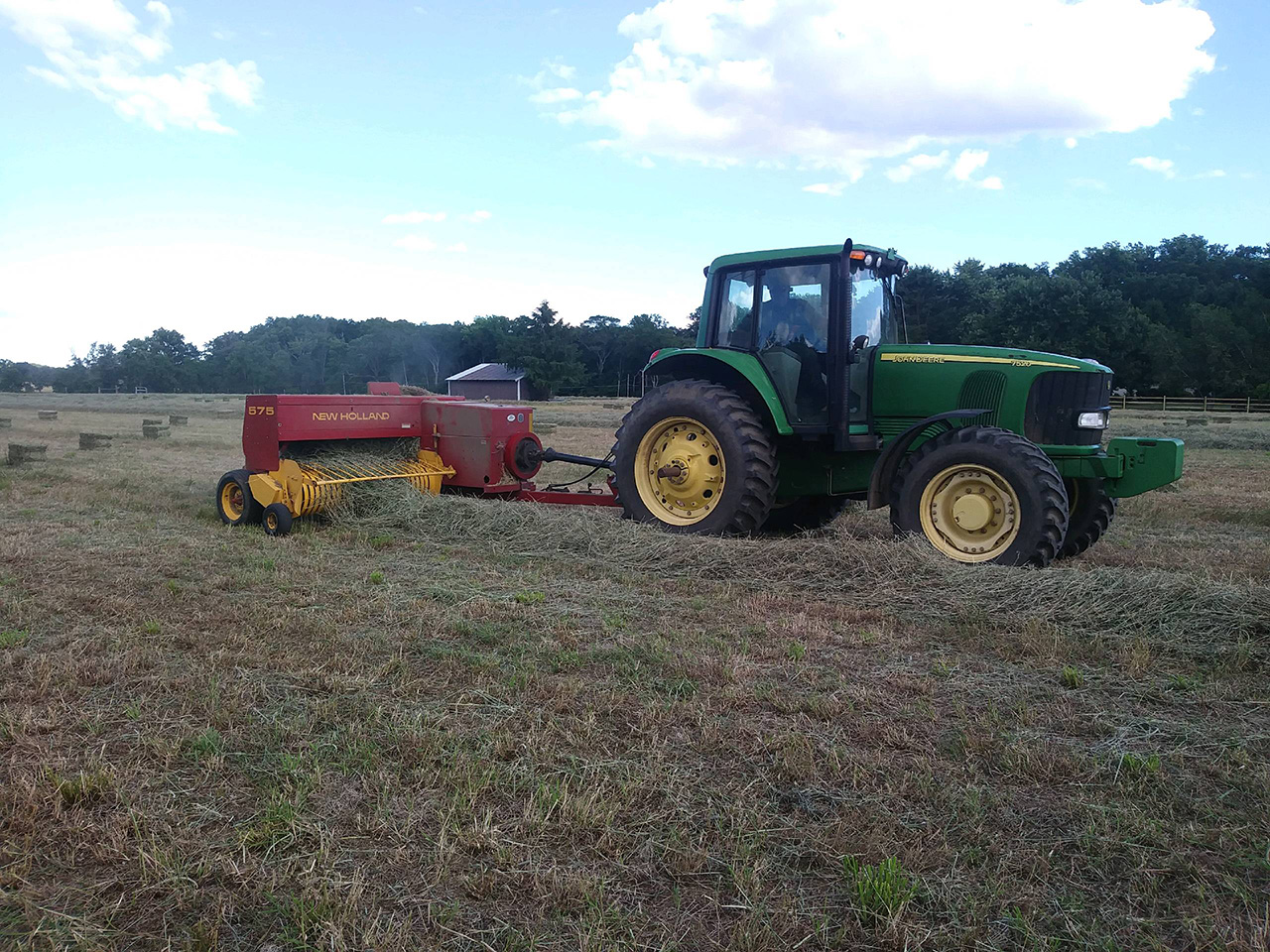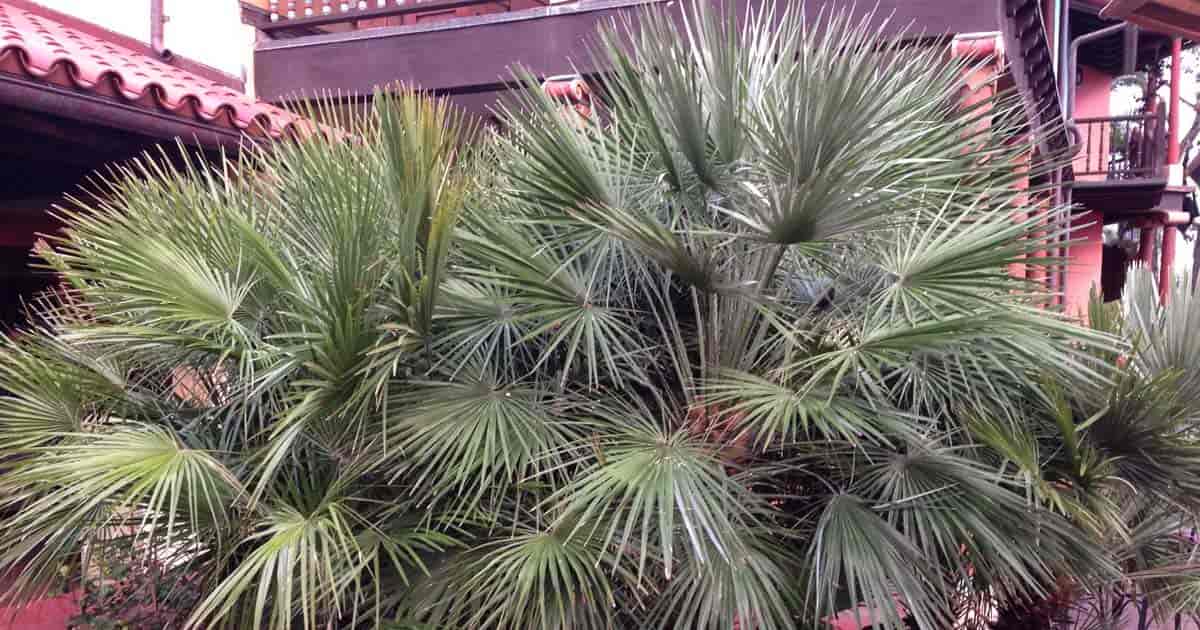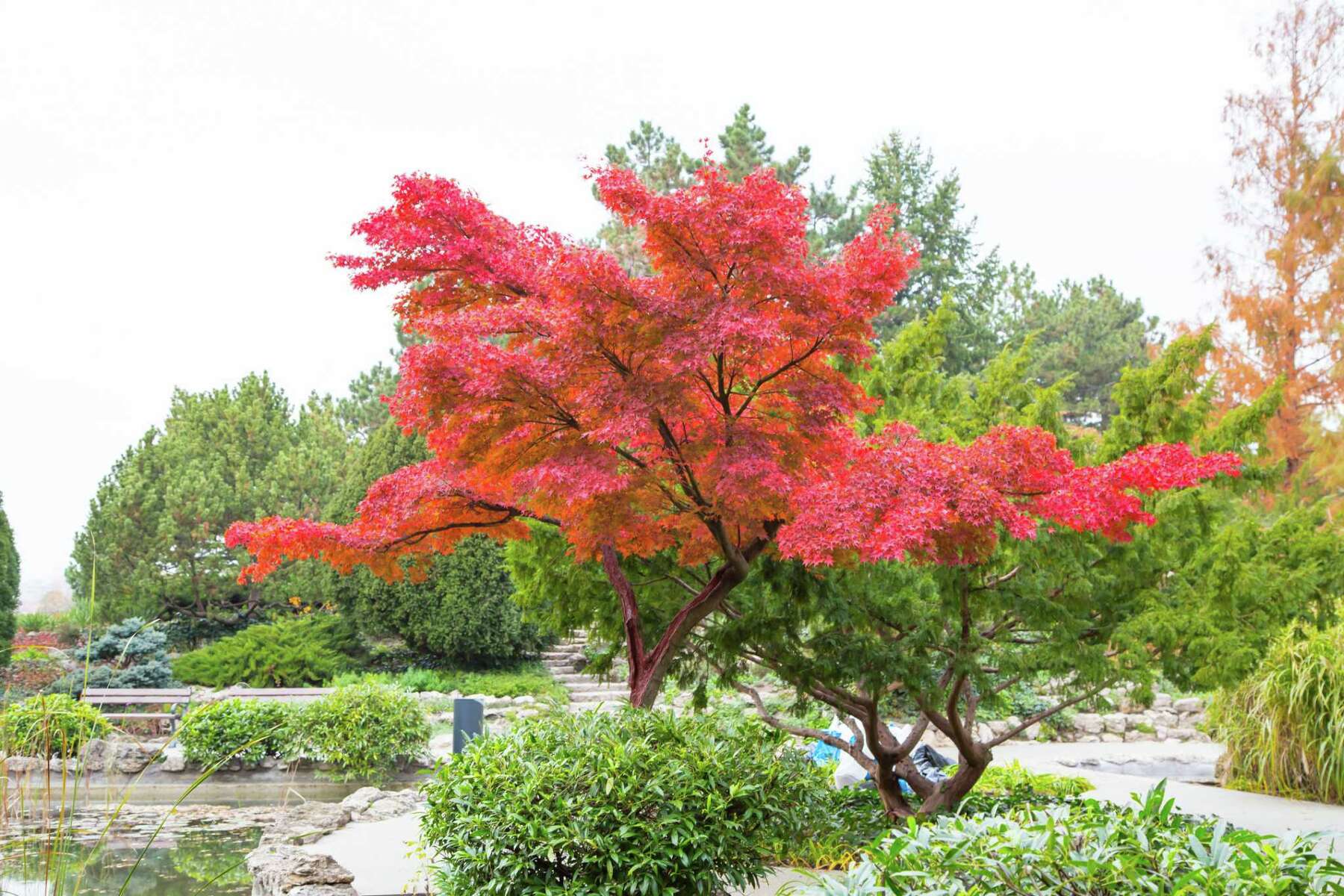Home>Types of Gardening>Ornamental Gardening>What Is The Best Fertilizer For Lilacs


Ornamental Gardening
What Is The Best Fertilizer For Lilacs
Modified: January 22, 2024
Discover the best fertilizer for lilacs in your ornamental garden. Enhance the growth and blooming of your lilac bushes with our expert gardening tips and recommendations.
(Many of the links in this article redirect to a specific reviewed product. Your purchase of these products through affiliate links helps to generate commission for Chicagolandgardening.com, at no extra cost. Learn more)
Table of Contents
Introduction
Welcome to the wonderful world of ornamental gardening! If you have a passion for creating beautiful outdoor spaces filled with vibrant flowers and lush greenery, then you’re in the right place. In this article, we’ll be delving into the fascinating realm of lilacs and exploring the best fertilizers to help these stunning flowering shrubs thrive.
Lilacs are renowned for their enchanting fragrance and gorgeous clusters of vibrant blooms. With their wide variety of colors and sizes, lilacs can add a touch of elegance and charm to any garden or landscape. However, to ensure that your lilacs reach their full potential and produce abundant and healthy flowers, it’s important to provide them with the right nutrients.
Choosing the best fertilizer for your lilacs can seem like a daunting task, with countless options available on the market. But fear not! In this article, we’ll walk you through the key factors to consider when selecting a fertilizer, including organic and synthetic options, slow-release formulas, and even homemade alternatives.
Whether you’re a seasoned gardener or a beginner, understanding the needs of your lilacs and how to meet them through proper fertilization is crucial. By providing the right nutrients, you can maximize flower production, encourage healthy growth, and ensure that your lilacs continue to thrive for years to come.
So, let’s dig in and explore the world of fertilizers for lilacs, helping you create a masterpiece of colors and scents in your garden. Prepare to be inspired and empowered as we unveil the secrets to nourishing your lilacs and transforming your outdoor space into a haven of natural beauty.
Factors to Consider When Choosing Fertilizer for Lilacs
When it comes to selecting the best fertilizer for your lilacs, it’s important to consider several key factors. Understanding these factors will help you make an informed decision and provide your lilacs with the nutrients they need to thrive. Here are some important considerations:
- Soil Composition: Before choosing a fertilizer, it’s crucial to understand the composition of your soil. Conduct a soil test to determine its pH level and nutrient content. Lilacs prefer slightly acidic to neutral soil with a pH range of 6.0 to 7.0. If your soil is deficient in certain nutrients, you can choose a fertilizer that addresses those specific needs.
- Nutrient Balance: Lilacs generally require a balanced fertilizer that provides a mix of essential nutrients such as nitrogen (N), phosphorus (P), and potassium (K). Nitrogen promotes healthy foliage growth, phosphorus supports strong root development, and potassium enhances overall plant health and flower production. Look for a fertilizer with an NPK ratio specifically formulated for flowering shrubs.
- Slow-Release vs. Quick-Release: Consider whether you prefer a slow-release or quick-release fertilizer. Slow-release fertilizers gradually release nutrients over an extended period, providing a steady supply to the lilacs. Quick-release fertilizers, on the other hand, provide an immediate burst of nutrients but may require more frequent applications.
- Organic vs. Synthetic: Decide whether you prefer organic or synthetic fertilizers. Organic fertilizers are derived from natural sources and contain beneficial microorganisms that improve soil health. They release nutrients slowly and promote long-term soil fertility. Synthetic fertilizers, on the other hand, provide nutrients in a concentrated form and are quickly available to the plants.
- Environmental Impact: Consider the environmental impact of the fertilizer you choose. Some synthetic fertilizers can contribute to water pollution if not used correctly. Look for fertilizers that are formulated to minimize runoff and leaching, or opt for organic alternatives that are environmentally friendly.
By considering these factors, you can choose a fertilizer that is tailored to the specific needs of your lilacs and your gardening preferences. Remember, every garden is unique, and what works for one may not work for another. Don’t be afraid to experiment and find the best fertilizer that suits your lilacs and helps them thrive.
Organic Fertilizer Options for Lilacs
If you’re looking for natural and environmentally friendly options to fertilize your lilacs, organic fertilizers are an excellent choice. These fertilizers are derived from natural sources and provide slow-release nutrients that nourish the soil and promote healthy growth. Here are some popular organic fertilizer options for lilacs:
- Compost: Compost is a fantastic organic fertilizer option for lilacs. It is made by decomposing organic matter, such as kitchen scraps, yard waste, and leaves. Compost enriches the soil with a wide range of nutrients, enhances soil structure, and improves moisture retention. Apply a layer of compost around the base of your lilacs in the spring, and let nature take its course.
- Bone Meal: Bone meal is an organic fertilizer rich in phosphorus, which is beneficial for root development and flowering. It is made from finely ground animal bones and is a slow-release fertilizer that gradually breaks down over time. Sprinkle bone meal around the base of your lilacs in early spring to provide a boost of phosphorus, enhancing the development of strong and healthy roots.
- Fish Emulsion: Fish emulsion is a liquid organic fertilizer derived from fish waste. It is a rich source of essential nutrients such as nitrogen, phosphorus, and potassium. Fish emulsion is readily absorbed by lilacs and provides quick-release nutrients. Dilute fish emulsion according to the package instructions and apply it as a foliar spray or directly to the soil around your lilacs during the growing season.
- Seaweed Extract: Seaweed extract is a natural fertilizer that is derived from seaweed or kelp. It is packed with trace elements, growth hormones, and beneficial microorganisms that improve soil health and stimulate plant growth. Seaweed extract can be applied as a liquid spray or added to the soil as a granular fertilizer. Regular applications of seaweed extract can enhance the overall vigor and resilience of your lilacs.
- Manure: Well-aged animal manure, such as composted cow or horse manure, can be an excellent organic fertilizer for lilacs. Manure is rich in nitrogen, phosphorus, and other essential nutrients. However, it’s important to use composted manure to avoid burning the roots of your lilacs. Apply a layer of composted manure around the base of your lilacs in the early spring, and water thoroughly to allow the nutrients to penetrate the soil.
- Green Manure Cover Crops: Consider planting cover crops such as clover or alfalfa around your lilacs as a natural way to improve soil fertility. These plants fix nitrogen from the air and add organic matter when they are tilled into the soil. Before the cover crops go to seed, cut and leave them on the soil surface as a mulch, allowing them to break down and release nutrients gradually.
Organic fertilizers provide a sustainable and eco-friendly approach to nourishing your lilacs. They not only supply the necessary nutrients but also help improve soil structure and fertility over time. Experiment with different organic fertilizer options and find the ones that work best for your lilacs, promoting their health and enhancing their natural beauty.
Synthetic Fertilizer Options for Lilacs
If you prefer a more concentrated and readily available source of nutrients for your lilacs, synthetic fertilizers are a viable option. These fertilizers are chemically formulated to provide specific ratios of essential nutrients, delivering quick and targeted feeding. Here are some popular synthetic fertilizer options for lilacs:
- Complete Granular Fertilizer: Complete granular fertilizers, labeled with an NPK ratio such as 10-10-10 or 20-20-20, offer a balanced mix of nitrogen, phosphorus, and potassium. They are easy to apply and provide an immediate burst of nutrients to your lilacs. Follow the package instructions for proper application rates and timing, typically applying granular fertilizer in early spring before new growth emerges.
- Water-Soluble Fertilizer: Water-soluble fertilizers, available in powder or liquid form, can be mixed with water and applied directly to the soil. They provide a quick and efficient way to deliver nutrients to your lilacs. Look for a water-soluble fertilizer specifically formulated for flowering plants and follow the recommended dilution ratio. Regular applications throughout the growing season will ensure a continuous supply of nutrients.
- Controlled-Release Fertilizer: Controlled-release fertilizers, also known as slow-release fertilizers, are designed to provide nutrients gradually over an extended period. These fertilizers are coated to release nutrients based on temperature, moisture, and microbial activity in the soil. Controlled-release fertilizers offer convenience and long-lasting feeding, reducing the need for frequent applications. Follow the manufacturer’s instructions for proper application rates and timing.
- Foliar Fertilizer: Foliar fertilizers are formulated to be sprayed directly onto plant leaves. They are absorbed through the foliage, providing quick and efficient nutrient uptake. Foliar feeding can be especially beneficial for lilacs since they have a dense foliage canopy. Look for a foliar fertilizer specifically designed for flowering shrubs and apply it during the growing season, following the recommended application rates and timing.
- Miracle-Gro: Miracle-Gro is a popular brand of synthetic fertilizer that offers a wide range of options for various plants, including lilacs. Miracle-Gro fertilizers are available in various formulations, such as granular, water-soluble, and slow-release. These fertilizers provide a balanced mix of nutrients and are easily accessible at most garden centers. Follow the package instructions for proper application methods and frequencies.
Synthetic fertilizers can provide a convenient and effective solution for meeting the nutritional needs of your lilacs. However, it’s important to use them according to the recommended rates and timing to avoid over-fertilization, which can lead to nutrient imbalances or damage to the plants. Remember to always water your lilacs thoroughly after applying synthetic fertilizers to prevent burning their roots.
Consider incorporating synthetic fertilizers into your lilac care routine, but also be mindful of the potential environmental impact. Proper application and responsible use can help minimize any potential consequences. Finding the right balance between synthetic and organic fertilizers can help you achieve healthy and thriving lilacs in your garden.
Slow-Release Fertilizer Options for Lilacs
Slow-release fertilizers are a great option for providing a steady and continuous supply of nutrients to your lilacs. These fertilizers are designed to break down gradually and release nutrients over an extended period, ensuring a sustained source of nourishment for your plants. Here are some popular slow-release fertilizer options for lilacs:
- Osmocote: Osmocote is a well-known brand of slow-release fertilizer that offers a controlled-release formula. The granules are coated with a resin that releases nutrients in response to temperature and microbial activity in the soil. Osmocote is available in various formulations, including specific ones for flowering plants. Apply Osmocote granules around the base of your lilacs and let them work their magic throughout the growing season.
- Jobe’s Organics Fertilizer Spikes: Jobe’s Organics fertilizer spikes are a convenient and effective way to provide slow-release nutrients to your lilacs. These spikes are easy to insert into the soil around the drip line of your plants. They gradually release nutrients as they dissolve, providing a constant feeding to your lilacs. Jobe’s Organics fertilizer spikes are made from natural ingredients, ensuring that your lilacs receive organic nourishment.
- Scotts Continuous Release Plant Food: Scotts continuous release plant food offers a 90-day feeding period, making it a practical choice for busy gardeners. It provides a slow release of nutrients to your lilacs, promoting steady growth and blooming. The granules can be sprinkled around the base of your lilacs and watered in for maximum effectiveness. Follow the package instructions for proper application rates.
- Espoma Slow-Release Plant Fertilizer: Espoma slow-release plant fertilizer is a trusted option for organic gardeners. It is made from natural ingredients, including feather meal, poultry manure, bone meal, and sulfate of potash. This slow-release fertilizer provides a gentle and continuous feeding for your lilacs. Apply Espoma plant fertilizer according to the package instructions and enjoy the benefits of organic and slow-release nourishment.
- Coated Granular Fertilizers: There are various coated granular fertilizers available on the market that provide slow-release feeding for lilacs. These fertilizers have a protective coating that breaks down gradually, releasing nutrients over time. Look for slow-release fertilizers specifically formulated for flowering shrubs or general-purpose fertilizers with a slow-release feature. Apply them according to the package instructions for optimal results.
Slow-release fertilizers are a convenient option for providing a consistent source of nutrients to your lilacs. They eliminate the need for frequent applications and ensure that your plants receive sufficient nourishment for healthy growth and abundant blooming. When using slow-release fertilizers, remember to water your lilacs regularly to activate the release of nutrients and to avoid over-fertilization.
Experiment with different slow-release fertilizer options to determine the best one for your lilacs. Factors such as climate, soil conditions, and specific plant needs may influence the choice of a slow-release fertilizer. By incorporating slow-release fertilizers into your lilac care routine, you can enjoy vibrant and thriving lilacs throughout the growing season.
Homemade Fertilizer Recipes for Lilacs
If you prefer a DIY approach or want to avoid synthetic or commercially available fertilizers, you can create homemade fertilizers for your lilacs using natural ingredients. These homemade fertilizers can provide your lilacs with nutrients in a cost-effective and environmentally friendly way. Here are some simple and effective homemade fertilizer recipes for lilacs:
- Banana Peel Fertilizer: Banana peels are rich in potassium, an essential nutrient for flowering plants like lilacs. To create a banana peel fertilizer, simply chop up banana peels into small pieces and bury them around the base of your lilacs. As the peels decompose, they will release potassium and other beneficial nutrients into the soil over time.
- Epsom Salt Solution: Epsom salt is a great source of magnesium, which can promote healthy foliage growth in lilacs. Dissolve 1 tablespoon of Epsom salt in a gallon of water and use it to water your lilacs. Apply the solution every few weeks during the growing season for best results.
- Coffee Ground Fertilizer: Coffee grounds are rich in nitrogen, making them a great natural fertilizer for lilacs. Simply sprinkle coffee grounds around the base of your lilacs, avoiding direct contact with the stems. As coffee grounds break down, they release nitrogen into the soil, promoting healthy growth and vibrant blooms.
- Eggshell Fertilizer: Eggshells are a natural source of calcium and provide nutrients to lilacs as they break down in the soil. Crush dried eggshells into small pieces and sprinkle them around the base of your lilacs. Alternatively, you can blend the eggshells into a fine powder and mix it with water to create an eggshell tea. Apply the tea to the soil around your lilacs to provide a calcium boost.
- Weed Tea Fertilizer: Utilize the nutrients from common weeds by creating a weed tea fertilizer. Collect weeds like nettles, comfrey, or dandelions, and place them in a container filled with water. Allow the weeds to steep for a few weeks, then strain the liquid. Dilute the weed tea with water and use it to water your lilacs, providing them with essential nutrients from the weeds.
These homemade fertilizer recipes offer a natural and affordable alternative to commercially available fertilizers. Remember to use these homemade fertilizers sparingly and in moderation, as excessive use can lead to nutrient imbalances. Additionally, always water your lilacs thoroughly after applying homemade fertilizers to ensure that the nutrients reach the root zone. Monitor your lilacs’ growth, health, and response to the homemade fertilizers and adjust the feeding accordingly.
By creating your own homemade fertilizers, you can nourish your lilacs using readily available household items and organic materials. Not only will this approach save you money, but it will also help reduce your environmental impact by minimizing the use of synthetic chemicals. Get creative and try different homemade fertilizer recipes to find the ones that work best for your lilacs and meet their specific nutritional needs.
Tips for Applying Fertilizer to Lilacs
Applying fertilizer correctly is essential to ensure that your lilacs receive the right amount of nutrients for optimal growth and blooming. Here are some helpful tips to keep in mind when fertilizing your lilacs:
- Timing: Apply fertilizer to your lilacs in early spring, just as new growth is beginning to emerge. This timing allows the plants to benefit from the nutrients as they start their active growth phase. Avoid fertilizing too late in the season, as this can stimulate late growth that may not have sufficient time to harden off before winter.
- Measure Properly: Follow the package instructions to measure the correct amount of fertilizer for your lilacs. Over-fertilization can lead to nutrient imbalances, plant stress, and potential damage. It’s better to err on the side of caution and apply a little less fertilizer than too much.
- Apply to the Drip Line: Sprinkle or spread the fertilizer evenly around the drip line of your lilacs, which is the area directly beneath the outermost spread of the branches. This is where the majority of the feeder roots are located, and applying the fertilizer here ensures that it reaches the roots effectively.
- Avoid Direct Contact: Keep fertilizer at least a few inches away from the base of the lilacs to avoid direct contact with the stems. This prevents the risk of root burn and damage to the plant. Remember that lilacs have shallow root systems, so it’s important to provide nutrients without causing harm.
- Water Thoroughly: After applying fertilizer, water your lilacs thoroughly. This helps to activate the nutrients and carry them down to the root zone. Adequate moisture is essential for nutrient uptake, so ensure that the soil is consistently moist but not waterlogged.
- Mulch: Apply a layer of organic mulch, such as wood chips or straw, around the base of your lilacs. Mulch helps conserve moisture, prevent weed growth, and gradually release nutrients as it breaks down. It also acts as a buffer between the fertilizer and the soil, reducing the risk of nutrient runoff.
- Observe Plant Response: Pay attention to how your lilacs respond to the fertilizer. Monitor their growth, foliage color, and overall health. If you notice any signs of nutrient deficiencies or excessive fertilizer burn, adjust your fertilizer application accordingly. Every garden is unique, so it’s important to assess and fine-tune your fertilization practices based on your specific lilac’s needs.
- Alternate Fertilizer Types: Consider alternating between organic and synthetic fertilizers or using a combination of both. This approach can provide a balance of slow-release and readily available nutrients, promoting consistent growth and flowering in your lilacs. Experiment with different fertilizers and find the combination that works best for your plants.
By following these tips, you can ensure that your lilacs receive the proper nutrients and grow to their full potential. Remember to always read and follow the instructions provided with your chosen fertilizer, and don’t hesitate to reach out to local gardening experts for personalized advice. With proper fertilization, your lilacs will reward you with a dazzling display of beautiful blooms year after year.
Conclusion
Ornamental gardening enthusiasts can take their love for beautiful landscapes to new heights by nurturing vibrant and healthy lilacs. Choosing the right fertilizer for lilacs is a crucial aspect of their care, as it provides the essential nutrients needed for robust growth, abundant blooms, and overall plant health.
When selecting a fertilizer, it’s essential to consider factors such as soil composition, nutrient balance, slow-release or quick-release options, organic or synthetic choices, and the environmental impact of the fertilizer. Organic options like compost, bone meal, fish emulsion, seaweed extract, and manure offer sustainable and eco-friendly alternatives. Synthetic fertilizers, such as granular, water-soluble, and slow-release options, can provide immediate and targeted nutrition. Slow-release fertilizer options, like Osmocote or Jobe’s Organics fertilizer spikes, provide a steady supply of nutrients over an extended period.
If you prefer a DIY approach, homemade fertilizers using items like banana peels, coffee grounds, epsom salt, eggshells, or weed tea can be effective and economical. Regardless of the fertilizer type chosen, it’s crucial to apply it correctly, water thoroughly, and observe the lilacs’ response to ensure proper nourishment.
By incorporating the tips mentioned in this article and understanding the specific needs of lilacs, gardeners can create enchanting displays of colorful blossoms and aromatic fragrances. Whether you are a seasoned gardener or a beginner, the joy of cultivating and witnessing the beauty of lilacs is something that can truly transform any outdoor space into a captivating haven.
So, get your hands dirty, experiment with different fertilizers and techniques, and watch as your lilacs thrive and become the centerpiece of your ornamental garden. With the right knowledge and care, your lilacs will reward you with years of stunning blooms, providing endless delight for yourself and everyone who visits your garden.

